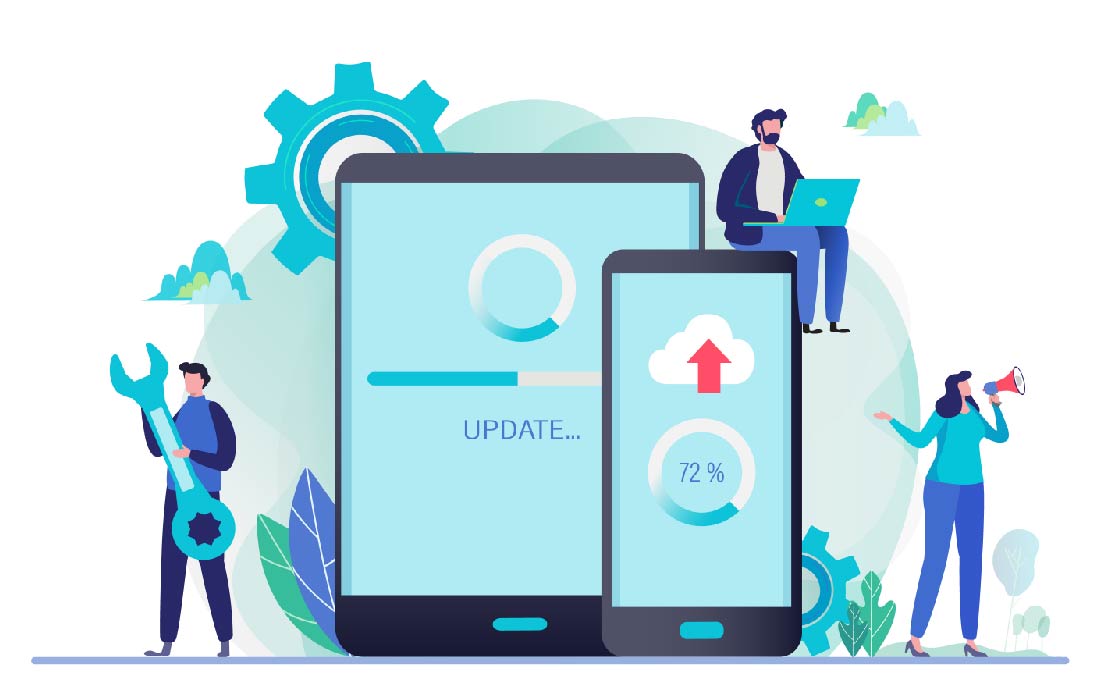Make Drupal 7 Site for a Subsequent Migration

Make Drupal 7 Site for a Subsequent Migration
There is an official announcement of an extension for Drupal 7 till November 2022 and it gives a relief for most of the organization to continue their site with the existing one. The service with the Drupal 7 can be stretched and can be sustained till that time. The organizations which invested in Drupal 7 can stay in the market for a long time without having to invest again in migration. There is another paid version support from Drupal (D7ES) to continue with till November 2025. This is very much supportive for the organizations those who cannot afford much in budget with limited resource. Although there is an expected end for Drupal 7 it is going to happen at the leisurely time. Subsequent migration needs to be carried out and it is a must to happen. This leisure time leverage us to start the migration of our sites in a controlled way without much risk without much hurry for the cut-off date.
Steps to be taken to carry Drupal 7 site for migration
- Start Altering your coding and site construction Ethos
- Engrossing with a content plotter
- Maintaining the whole thing secure and up to date
Start altering your coding and site construction Ethos
Drupal 7 is extensively different from its higher versions. This is reflected in the way the custom codes are written. Drupal 7 does not support much of the OOP paradigms. But those can be customized in much easier fashion in the higher versions.

Encapsulating business logic into classes
By having meaningful logical unit under the class instead of keeping them as lengthy procedure or functions, we can improve the maintainability. Hooks are the common way to customize in Drupal. We can’t eliminate it altogether, but we can enhance the clarity there by reducing the ambiguity.
Instead of coding like this:
function form_alter(&$form, &$form_state, $form_id)
{
if ($form_id == 'example_node')
{
$form['example_field'] =
[
'#type' => 'textfield',
'#title' => t('Example field'),
'#weight' => -5,
'#maxlength' => 100,
];
$form['submit'] = 'example_submit_handler';
}
if ($form_id == 'example_user')
{
// different functionality
}
}We can start using something like this:
function form_alter(&$form, &$form_state, $form_id)
{
$FormManager = new FormManager();
$FormManager->alterForm($form, $form_state);
}The FormManager class will have all the methods essential to define when and how to change the form. If the whole thing is well-named and documented, this will make it easier to port over to higher versions of Drupal 7. One More prospect to wrap business logic in classes is with entity wrappers. It facilitates our code be more structured and compact.
Drift Toward Solutions that Trust on Structured Content
Suggesting for averting Blocks and Panels is the basic objective of this content.
There is a major change in the way the Blocks are implemented in Drupal 8 and endeavoring to migrate them can bring in added complexity. It is simpler to reconstruct them by hand or with a custom script.
The easiest way to avoid the usage of Block is to replace it with Panels, where practically anything can go. Replacing Panels can establish added risk when approaching for a migration if it is not governed properly. Risk mitigation is to be estimated in case we deal with this.
Instead of a Panel, we can think of using an Entity with set Entity Reference fields, which then can be mapped to pre-defined templates. This type of thinking might require another paradigm shift, and for that, we need some guidance.
Engross a Content Plotter
Neglecting the timeline of Drupal 7 end, we need to forecast the future and prepare ourselves for migration of Drupal 7 site.
- What is the goal set?
- What are the user-friendly tools that can be used for editing?
- How to make CMS & content best serve the above-mentioned needs?
A content plotter can help us to get the answer for these questions. What can a good content plotter help you do?

Audit Your Content
Migration will become more cumbersome if we have more content with various types. A content audit can help us to determine which content is insipid and which content needs to be either archived or updated. One of the merits of a content audit, is finding content with improper structure.
How to raise red alert for the following cases,
- Metadata that contains details about the content itself.
- Iframes from various sources, with inconsistent sizes.
- Various methods of image embedding from one article to the next.
- How to deal with outdated links,
Tools like SQueaLer Drush can be helpful for this.
The above-mentioned special cases when migrating, makes the process more complex. Cleaning them up for now will save time and money later while making our site more maintainable in the present.
Create a Plan for Content Governance
Auditing and cleansing up our substance is a welcomely attitude, but if we don’t change our outdated practices, weeds will keep exploding up. Re-evaluate who can build content and what they can do within that horizon. We need to identify the problematic content that doesn’t suit with our strategy. We need to find a solution in such a way that the processes help prevent the creation of more problematic content.
Estimation of time should be carried out to assess how much time should you spend per month for cleaning up or archiving old content. Someone who is well versed with the content analysis should be assigned the responsibility to clean the content. A good content plotter can support us to ascertain what our future should ultimately look like. Focus On these prospective problems as soon as we can do it. Begin imagining about them at the earliest. If we do not do it, they will remain to inhabit our future site, even if we end up leaving Drupal. These visions are platform neutral.
Take Moment to Brand Your Content
Most of the sites at the initial seems to be growing in the right way turn to be chaos when the stakeholder’s interests are tried to be fulfilled. Many of the unwanted features are bundled even when the pains are taken to collect the requirements after careful analysis. Editors ought to get a landing page look just right and infuse things in the body field as a quick fix. Questions and new requirements should be based on whether the site can do anything useful, rather than whether the site should do something.
Our content audit needs to fix at the structural level. Our content governance strategy needs some secure barriers to improve with implementation. Our Drupal 7 site needs to align better with
the goals and message of our organization. This is applicable not only for new content types, but also for of existing content types.

Some common examples of structure changes:
- Shifting associated article links outside the body field and into their own Entity Reference field.
- Supplementary (or fewer) taxonomy fields.
- An “Authors” Entity Reference field distinct from the default author field.
For media management, imagine about exploiting the Media module to improve guarantee proper metadata surrounding media, and to help enforce a single solution for including media in content. Appropriately modeling our content, and beginning to implement that model, will gain countless benefits. It will be easier to alter the presentation of our site regularly. Opportunities for content re-use will become clearer. Our next content audit will be less prickly.
Modeled and structured content will make our migration much easier. Well-organized content is constantly easier to migrate than amorphous content. It means a large piece of the hard work needed will already have been done.
Maintaining the whole thing secure and up to date
Our Drupal 7 site should be maintained up to date. It means Drupal core and all the modules we and the hosting environment. Do not linger jammed on earlier versions of PHP. The modern versions of Drupal 7 support the most recent versions of PHP 7, which has a good balance to it. All these help us keep your current site secure and performant, and to make a future migration easier. The most recent versions of contrib modules are generally closer to their Drupal 8+ equivalents in terms of organization and how they store data. They also can take advantage of PHP 7 improvements and syntax. Being acquainted with PHP 7 will relieve the subsequent transition.

Conclusion
Drupal 7 has been offered a new tenancy on time, and if we are presently reliant on Drupal 7, we can breathe a little leisurelier. Our CMS will be supported for another year, and even longer if we reach out to a qualified D7ES vendor. We need to use this time prudently and get ourselves prepare for the outlook. Let us make effort to our Drupal 7 site work better for us in the current simultaneously making our subsequent migration move easier. Let the organizations foresight, clarity, and poise, recognized for preparing the organization to make into the giant leap.

